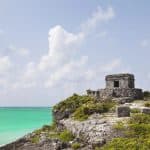Southern California has awesome places for week-long hikes, from deserts and beaches to mountains. It’s not just about hiking around; it’s about pushing yourself and enjoying amazing views.
Before you get going, you’ll need to plan and choose the right gear for safety and comfort.
In this article, I’ll give you insights and recommendations on how to best experience the wonders of this golden state.
Article Highlights
- Thru-hikes in Southern California cater to diverse preferences, offering everything from desert to mountainous trails.
- Preparing for a thru-hike involves selecting the right trail, gearing up appropriately, and planning for safety and sustainability.
- The experience can be physically and mentally challenging, yet profoundly rewarding, punctuated by breathtaking landscapes and personal growth.
Choosing the Right Thru-Hike
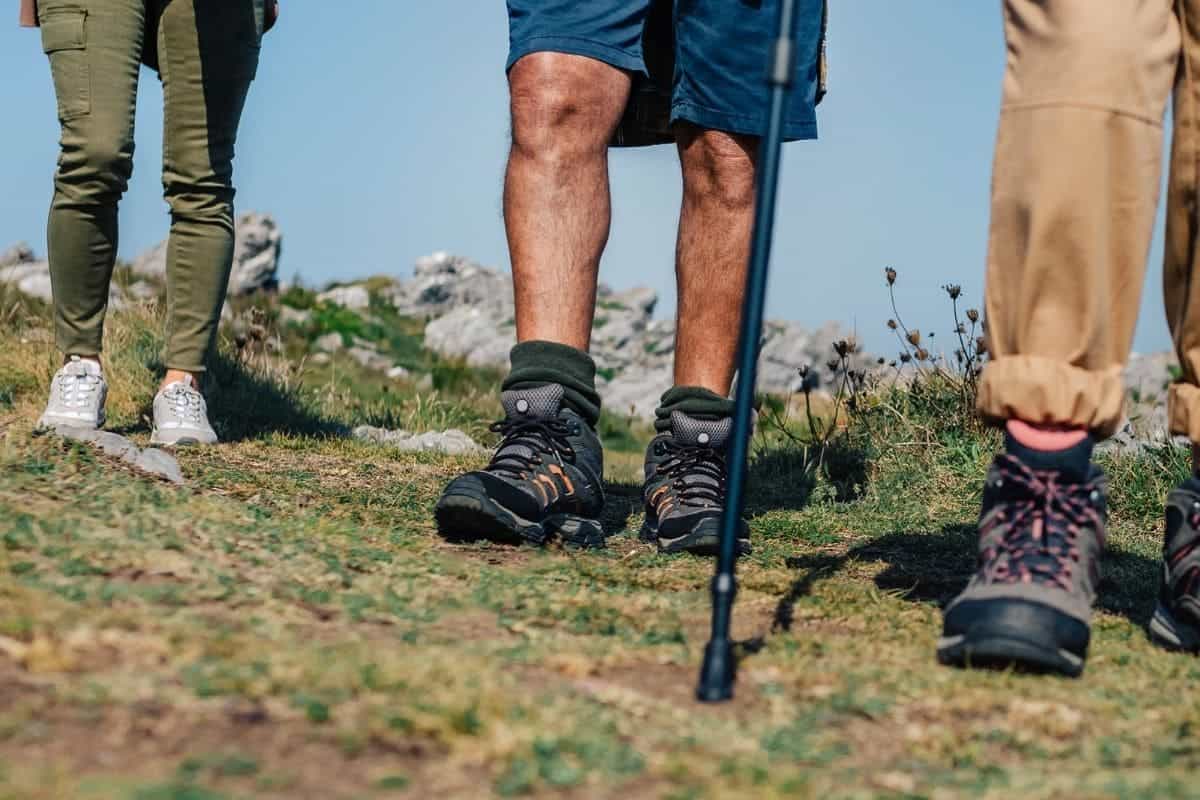
Before you decide on a week-long thru-hike in Southern California, you’ll need to evaluate your fitness, understand the trail’s challenges, and consider your time commitment. Let’s get you on the trail that matches your hiking ambitions.
Assessing Fitness and Experience
Take a moment to assess your current fitness level and hiking experience.
Southern California’s trails can range from moderate coastal walks to more physically demanding mountain treks.
If you’re regularly hitting the gym or going on day hikes, a trail like the Trans-Catalina Trail might be within your skill set. It covers about 38.5 miles and typically takes 3-5 days to complete.
Understanding the Terrain and Difficulty
Familiarize yourself with the trail’s terrain and difficulty level.
A hike’s terrain can greatly affect its difficulty level. For instance, the San Gorgonio Wilderness offers rugged paths and elevation gains that demand sturdy footwear and ample water supply.
Research the trail conditions beforehand; check recent trip reports for potentially tricky sections like stream crossings or snow patches.
| Trail Name | Terrain Type | Elevation Changes | Known Challenges |
|---|---|---|---|
| Trans-Catalina | Coastal, rolling hills | Moderate | Limited shade, water resupply |
| San Gorgonio | Mountain, forest | High | Steep ascents, navigation |
Considering Trail Length and Time Commitment
Lastly, think about the trail length and your time availability.
Even if you’re fit and experienced, consider a hike that can be completed within a week. The Lost Coast Trail, for instance, is a 53-mile route typically hiked in 3-4 days, leaving you time for travel and any unforeseen delays.
Always allow some wiggle room in your schedule for rest days or slower-paced hiking if needed.
Best Time to Thru-Hike
Seasonal Weather Conditions
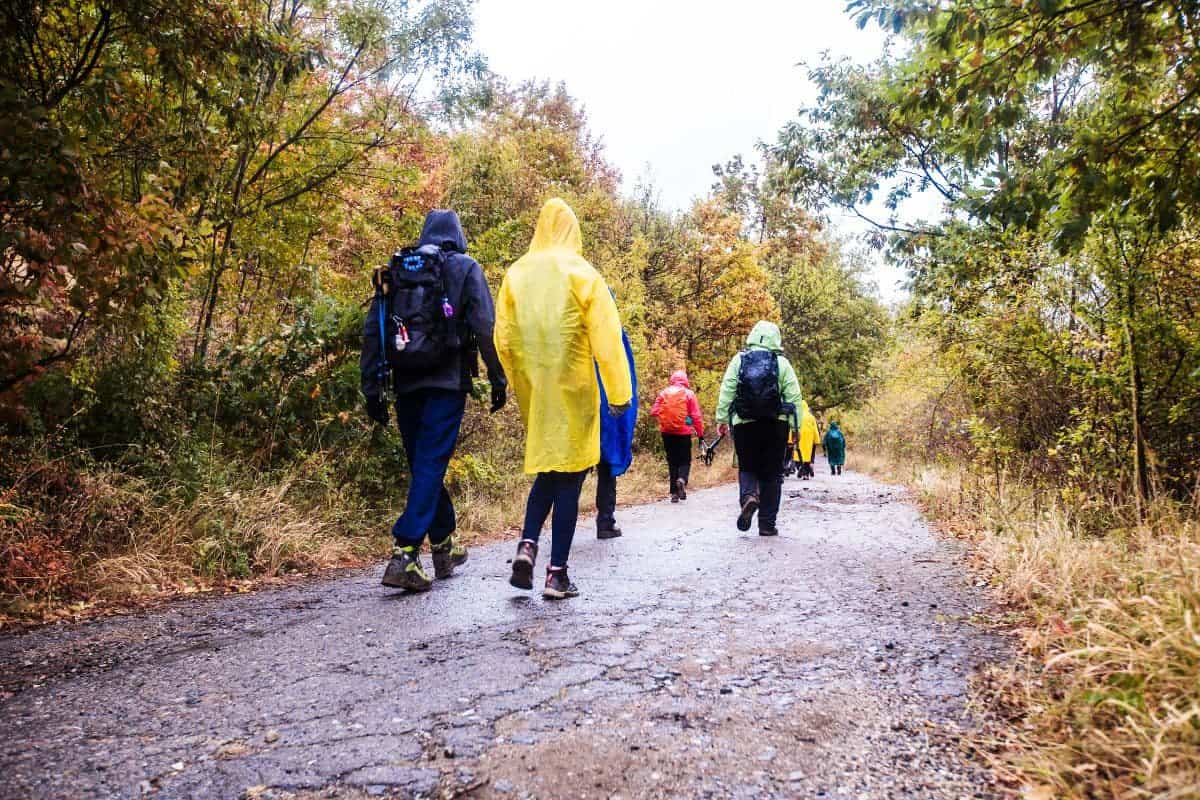
Southern California’s climate varies from the coastal areas to the inland deserts and mountains, affecting your thru-hiking experience.
- Spring (March-May): Expect wildflower blooms and mild temperatures, making it a prime time to hike, especially in the desert regions, before it gets too hot.
- Summer (June-August): It can be very hot, especially in desert areas, with temperatures soaring above 100°F. In mountain areas, it’s more tolerable but still carries plenty of water.
- Fall (September-November): Often the sweet spot for hiking. Cooler temperatures and clearer skies are typical, but watch for early snow in higher elevations.
- Winter (December-February): Shorter days and the potential for rain or snow in mountainous areas make this a less popular season. However, desert trails are cooler and more pleasant.
Avoiding Crowds and Peak Seasons
Thru-hiking during the less crowded times means more solitude and often a better connection with nature. However, here’s what you should anticipate:
| Seasons | Ideal Conditions | Crowds |
|---|---|---|
| Spring/Fall | Mild temperatures, fewer crowds | Fewer hikers |
| Summer | Hot temperatures, crowded trails | High crowds on weekends and holidays |
| Winter | Least crowds, shorter days, unpredictable weather | Fewer hikers |
Essential Gear and Preparation
A successful trek starts with proper preparation, so let’s make sure you’re ready to roll.
Backpacking Essentials
When you shop for your backpacking trip, think of REI or similar outfitter stores as a good starting point to get quality gear.
Your checklist should include:
- A map, a compass, and consider a GPS device.
- Chapstick with SPF, sunglasses, and sunscreen.
- Adequate warm layers for sudden weather changes.
Core Mountaineering Pro-Tip: Test your gear before any outdoor adventure to avoid unexpected issues.
Channeling Water Sources
Water sources in Southern California can be scarce, so always have a backup plan in case a water source is dry.
- Use topographic maps and trail guides to mark water sources on your route.
- Carry a water filter or purification tablets to make any water safe to drink.
Food and Nutrition Planning
Plan your meals wisely to maintain energy levels throughout the hike. Divide your food into daily ration packs to make it easier to manage.
- Aim for lightweight, high-calorie foods like nuts, dried fruit, and energy bars.
- Plan each day’s meals, taking into account your body’s increased caloric needs while hiking.
Top Trails for Week-Long Treks
1. High Sierra Trails
In the High Sierras, you’ll experience some of the most dramatic landscapes the region has to offer.
An absolute must, the John Muir Trail (JMT), while longer than a week, offers sections that can be tackled within your timeframe. If you start at Mammoth Lakes, you can cover a part of the JMT that includes stunning backcountry highlights.
Highlights: The section from Mammoth Lakes to Muir Trail Ranch, passing through the resplendent Evolution Valley.
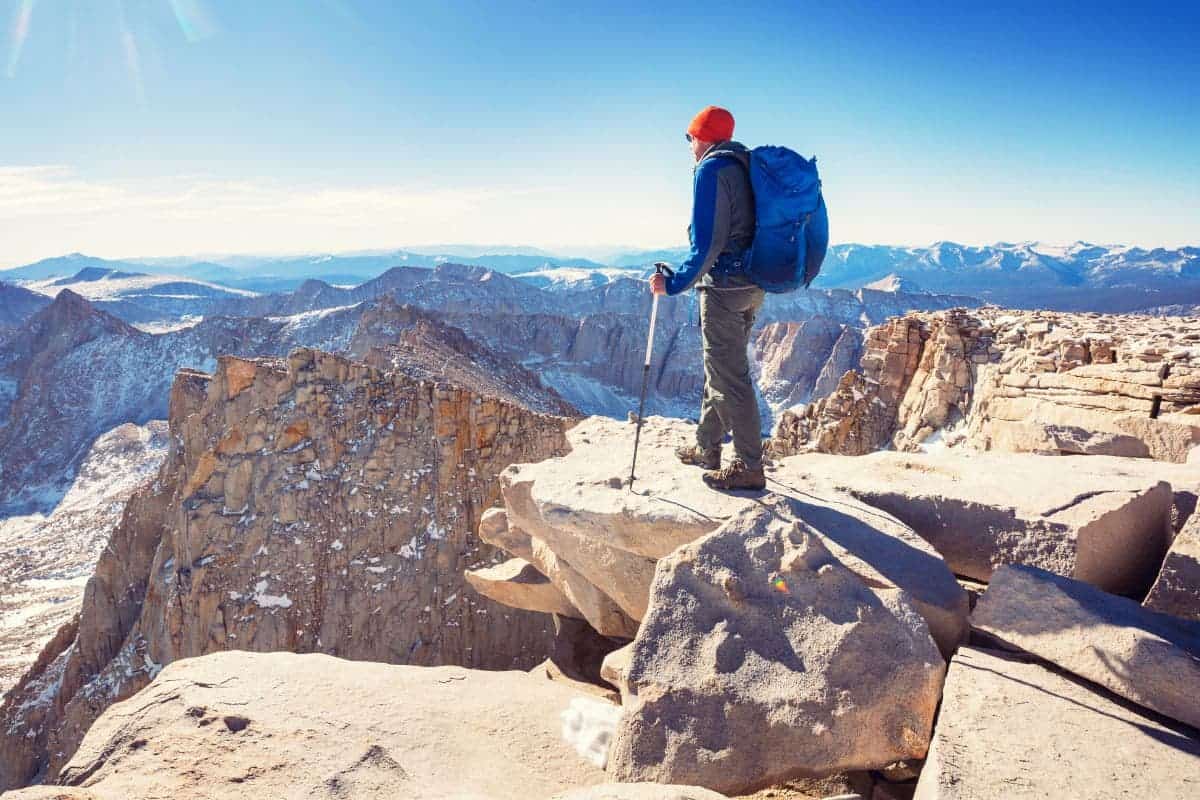
While extremely challenging, a week-long hike to Mount Whitney, the tallest peak in the contiguous United States, is an unparalleled accomplishment. This trek requires permits and serious preparation.
2. Desert Adventures
A week-long trek on the Pacific Crest Trail (PCT) through the Mojave Desert section can be a life-changing experience.
Remember, desert hiking has its hazards, so plan your trip during cooler months and prepare for water scarcity.
Highlights: Traverse the unique Pinnacles of Trona, which offers a bizarre and unforgettable landscape on the PCT near Ridgecrest.
Joshua Tree National Park is not specifically part of the PCT, but it offers backcountry trails that are ideal for a week-long excursion into the desert wilds.
3. Coastal and Island Trails
Southern California’s coast is not just about beaches; there are great trekking opportunities with breathtaking ocean views. Moreover, Catalina Island offers a wealth of hiking trails for multi-day exploration of the island.
Highlights: The Trans-Catalina Trail is a 38.5-mile trek across Catalina Island, showcasing spectacular coastal views and diverse ecosystems.
For a more continental coastal experience, consider sections of the California Coastal Trail which, while still under development, offers routes along the southern beaches and bluffs.
Navigation and Safety
Core Mountaineering Pro-Tip: Before setting out on your hike, familiarize yourself with the terrain and plan your route accordingly to make the most of your hiking experience.
Wildlife Encounters
Encountering wildlife is a real possibility in the wilderness areas of Southern California. To stay safe and minimize impact:
- If you come across wildlife, keep a respectable distance. For bears and mountain lions, make noise to discourage approach.
- Use bear-proof containers to protect your provisions from nosy animals.
Trail Marking and Maps
Planning trails can be challenging without the right tools. To stay on track:
- Equip yourself with updated region maps showing the terrain’s contours and features.
- Regularly look for markers or signs to ensure you’re following the correct path.
Obtaining Wilderness Permits
Wilderness permits are essential for overnight stays. Here’s how to obtain them:
- Identify your target area as different areas may have separate permitting processes.
- Apply in advance. Secure your permit early, as some popular trails have quotas limiting the number of hikers.
Environmental Responsibility
Established in 1964, the Wilderness Act protects over 109 million acres of federal land in the United States, emphasizing the importance of preserving natural areas for future generations.
Leave No Trace Principles
- Plan Ahead and Prepare: Do your homework. Know the regulations and special concerns of the area you’ll visit. This can include fire regulations, bear canister requirements, or trail closures.
- Travel and Camp on Durable Surfaces: Stick to established trails and campsites. The wild is more resistant to damage when you use areas already meant for travel and camping.
- Dispose of Waste Properly: Pack it in, pack it out. This also applies to toilet waste. Use restrooms where available or bury human waste 6 to 8 inches deep and at least 200 feet from water, trails, and campsites.
- Leave What You Find: Appreciate, but don’t alter. That awesome rock or interesting artifact needs to stay right where it is.
- Minimize Campfire Impacts: Use a camp stove for cooking. If you must build a fire, keep it small, use existing fire rings, and burn only small pieces of dead wood found on the ground.
- Respect Wildlife: Observe wildlife from a distance. Never feed animals, as human food can harm their health and alter natural behaviors.
- Be Considerate of Other Visitors: Keep it down and let the sounds of nature prevail. Ensure your experience doesn’t negatively affect another’s.
Protecting Flora and Fauna
- Tread Lightly Around Plants: You’re sharing the backcountry with a diverse range of plants. Stick to the trail to avoid trampling them.
- Control Your Furry Friends: Keep pets under control. They can disturb wildlife and plant life if they wander off the trail.
- Adhere to Trail Signs: Closures and restrictions are there for a reason. Maybe they’re protecting a sensitive habitat or a species during mating season. Your compliance keeps the ecosystem balanced.
End-to-End Logistics
Transportation to and from Trails
Grabbing a ride to your starting point and planning your exit from the trail’s end might seem unsettling, but Southern California offers a few options.
| Transportation Method | Highlights |
|---|---|
| Public Transportation | Not extensive in rural areas. Some routes may get you close to trailheads. Research local bus or shuttle services in the region. |
| Shuttles | Trail-oriented shuttle services are available for drop-offs and pick-ups. Not always cheap but can save hassle. |
| Ridesharing | Apps like Uber or Lyft often work well for accessible trails. Check in advance if the service is available in your desired area. |
| Personal Vehicle | Plan a loop trail or organize a ride back to your starting point. Carpooling is a great option if hiking with friends. |
Resupply Points and Town Visits
Locate towns near the trail where you can resupply beforehand. Check their distances from the trail to ensure they’re reachable.
Small town stores may also have quirky hours, so double-check when you can resupply. Some hikers send supply boxes to post offices or local businesses in towns near the trail. Verify in advance if these services are available and willing to hold packages for hikers.
Core Mountaineering Pro-Tip: Travel light and resupply more often or carry more and resupply less. Your choice affects your pack weight and the distance you can cover between towns.
Lastly, use trail websites or contact local hiking clubs for up-to-date information on resupply points.
Physical and Mental Challenges
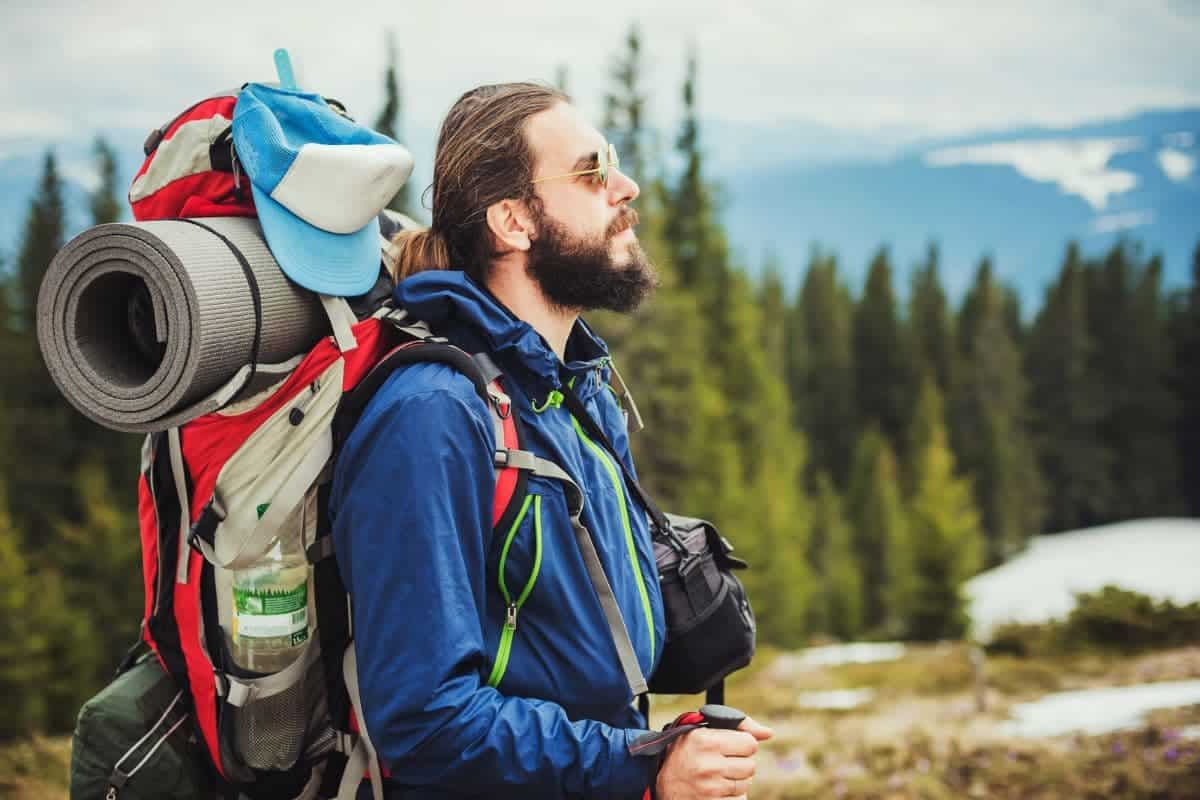
When you tackle a week-long thru-hike in Southern California, be ready for a workout that tests both your body and mind. You’ll face steep climbs and potentially high altitudes, all while having ample time to ponder in solitude.
Elevation Gain and Altitude Effects
Expect significant elevation gain when hiking in Southern California.
For instance, a hike up Mount Baldy racks up about 3,900 feet in elevation gain, pushing your fitness level.
The effects of higher altitudes might include shortness of breath and fatigue, so it’s wise to acclimate and stay hydrated.
| Mountain | Elevation Gain | Additional Information |
|---|---|---|
| Mount Baldy | 3,900 feet | |
| San Gorgonio | – | Tallest peak in Southern California |
| San Jacinto Peak | – | Requires good acclimatization |
Solitude and Mental Stamina
The solitude on long trails can be profound but confronting it builds mental stamina. It’s about embracing the quiet, focusing on the moment, and managing any self-doubt that arises.
After the Hike
Post-Hike Recovery
Your body has been through a lot, give it the rest it deserves. Make sure to stay hydrated and eat nutritious food to replenish.
Gently stretch or consider a gentle yoga class to help your muscles. Moreover, listen to your body; if you’re in pain, consider seeing a professional.
Sharing Your Experience
Pick the best photos and videos to post on social media platforms like Instagram or Facebook.
You can also write a blog post or trip report to share the challenges and rewards. Also, connect with a hiking community online or in-person to share tips and stories.
Frequently Asked Questions
What are some popular week-long hiking trails in SoCal?
You might check out the High Sierra Trail or a section of the Pacific Crest Trail not within the Laguna Mountain Recreation Area. These trails offer stunning landscapes and just the right length for a week-long trek.
Can I complete the John Muir Trail in a week?
Completing the entire John Muir Trail in a week is unlikely since it stretches over 210 miles. However, you can tackle a substantial section of the trail depending on your pace and experience level.
Are there any coastal backpacking adventures in Southern California?
Yes, the Lost Coast Trail offers a unique coastal backpacking experience. Although not exclusively in SoCal, it provides a rugged, remote hike along the shoreline that you can fit into a week.
What do I need to know before attempting the Trans-Catalina Trail?
The Trans-Catalina Trail spans approximately 38.5 miles. You should be prepared for challenging elevation changes and arrange for camping permits ahead of your hike.
How do you prepare for a multi-day hike in the backcountry of SoCal?
Start by conditioning your body with shorter hikes, gradually increasing distance and elevation. Training well, packing appropriately, and familiarizing yourself with the area are key steps.
What permits do I need for backpacking in Southern California’s wilderness areas?
Permit requirements vary. National Parks often require a backcountry permit, while certain areas of the PCT may have additional restrictions.
wrapping up – Take treks in southern California that match your fitness level
Setting foot on a week-long thru-hike in Southern California demands careful consideration and preparation. Therefore, it’s essential to evaluate your fitness level and grasp the terrain and weather conditions to make informed decisions.
Remember, each trail offers its own challenges and rewards, so choose wisely to match your ambitions.





